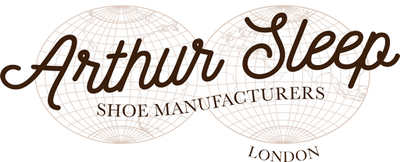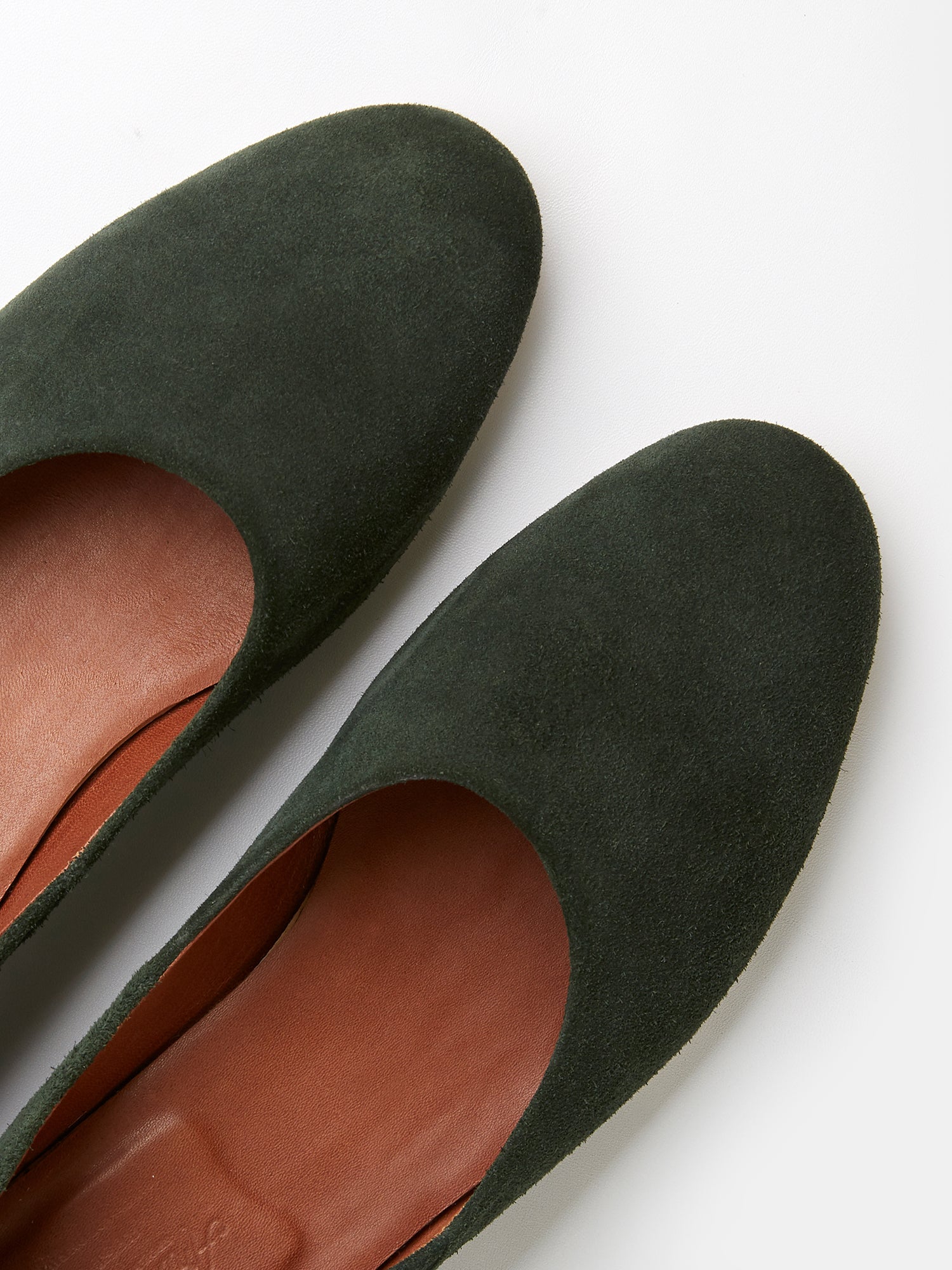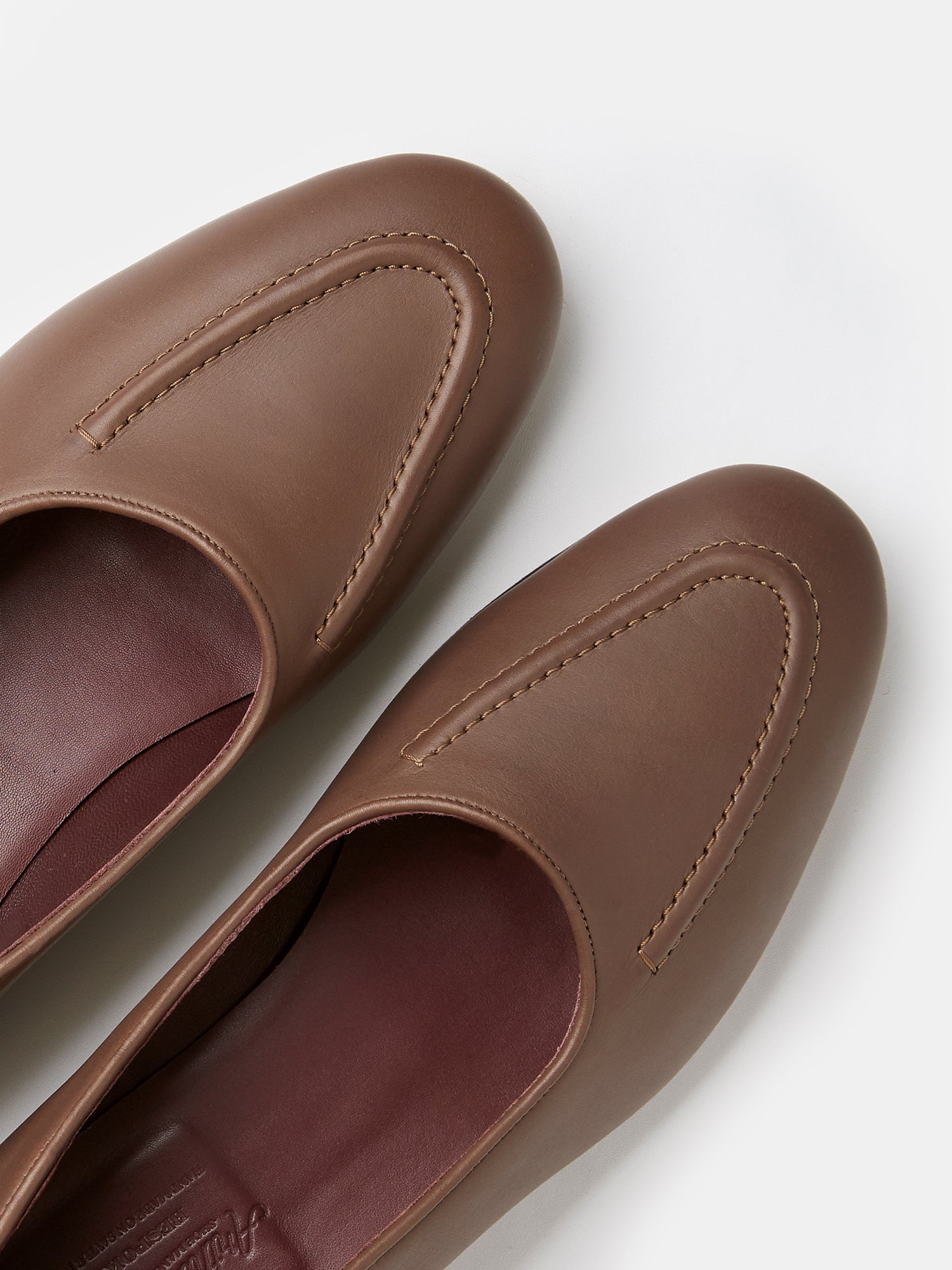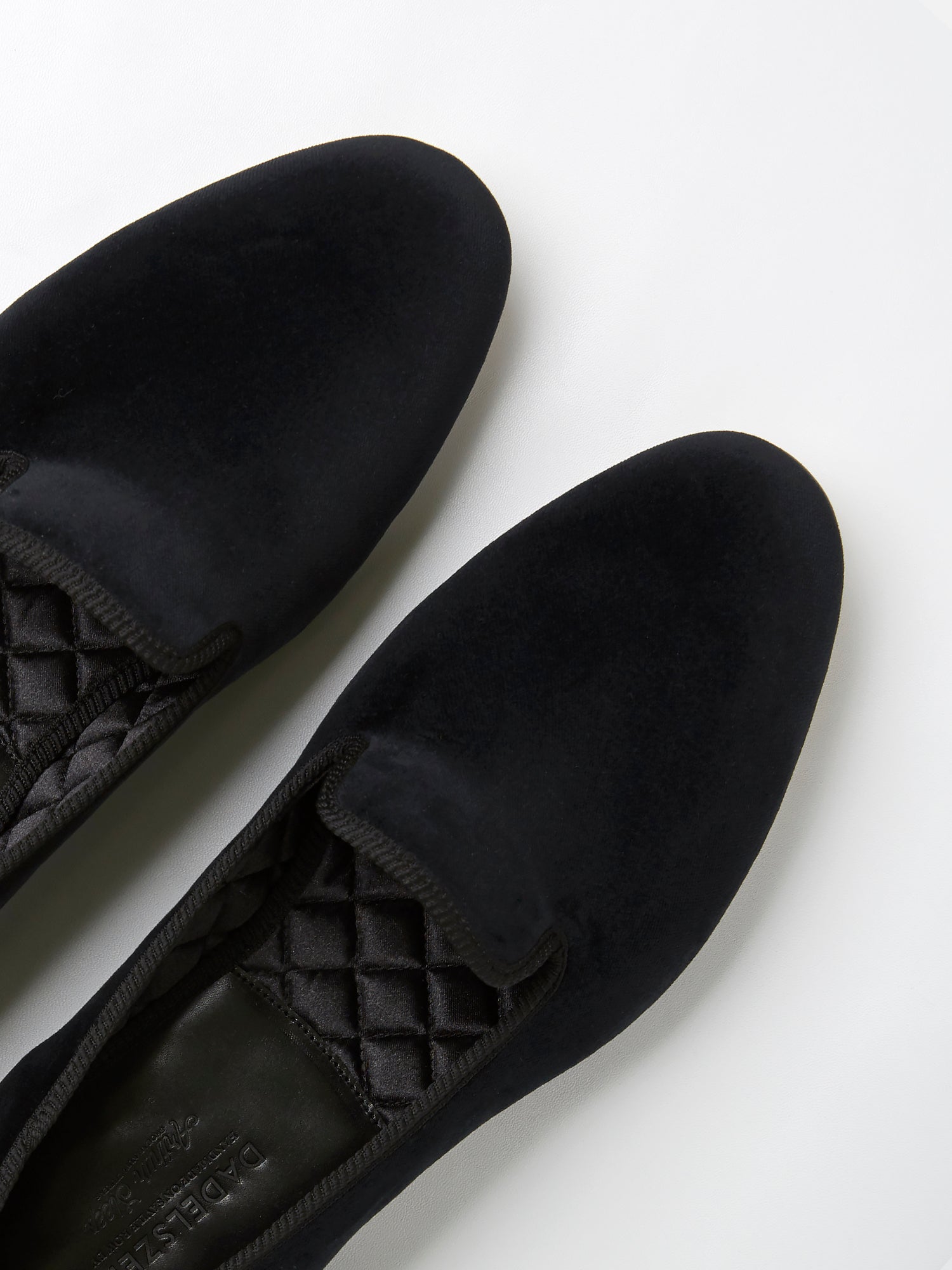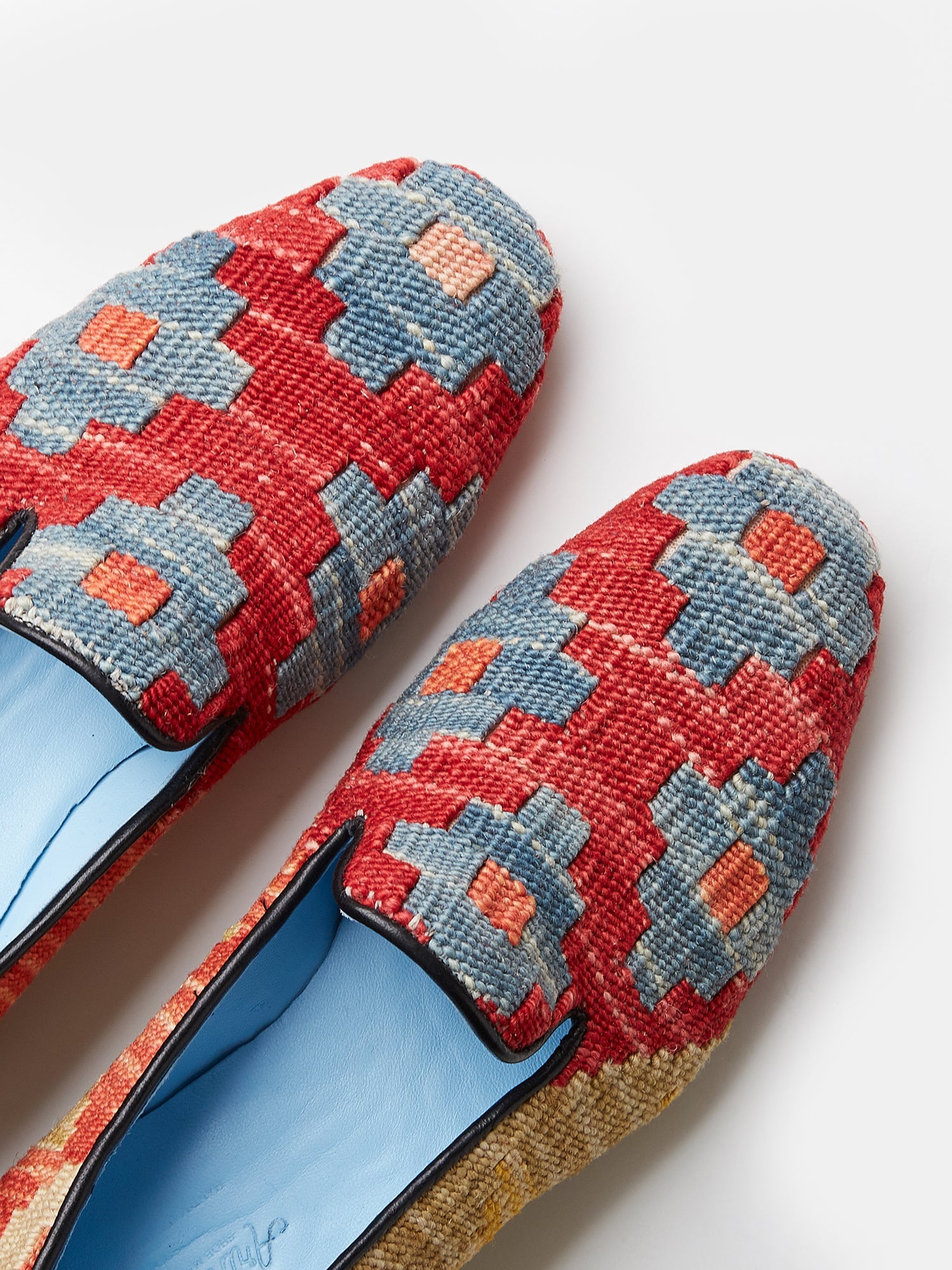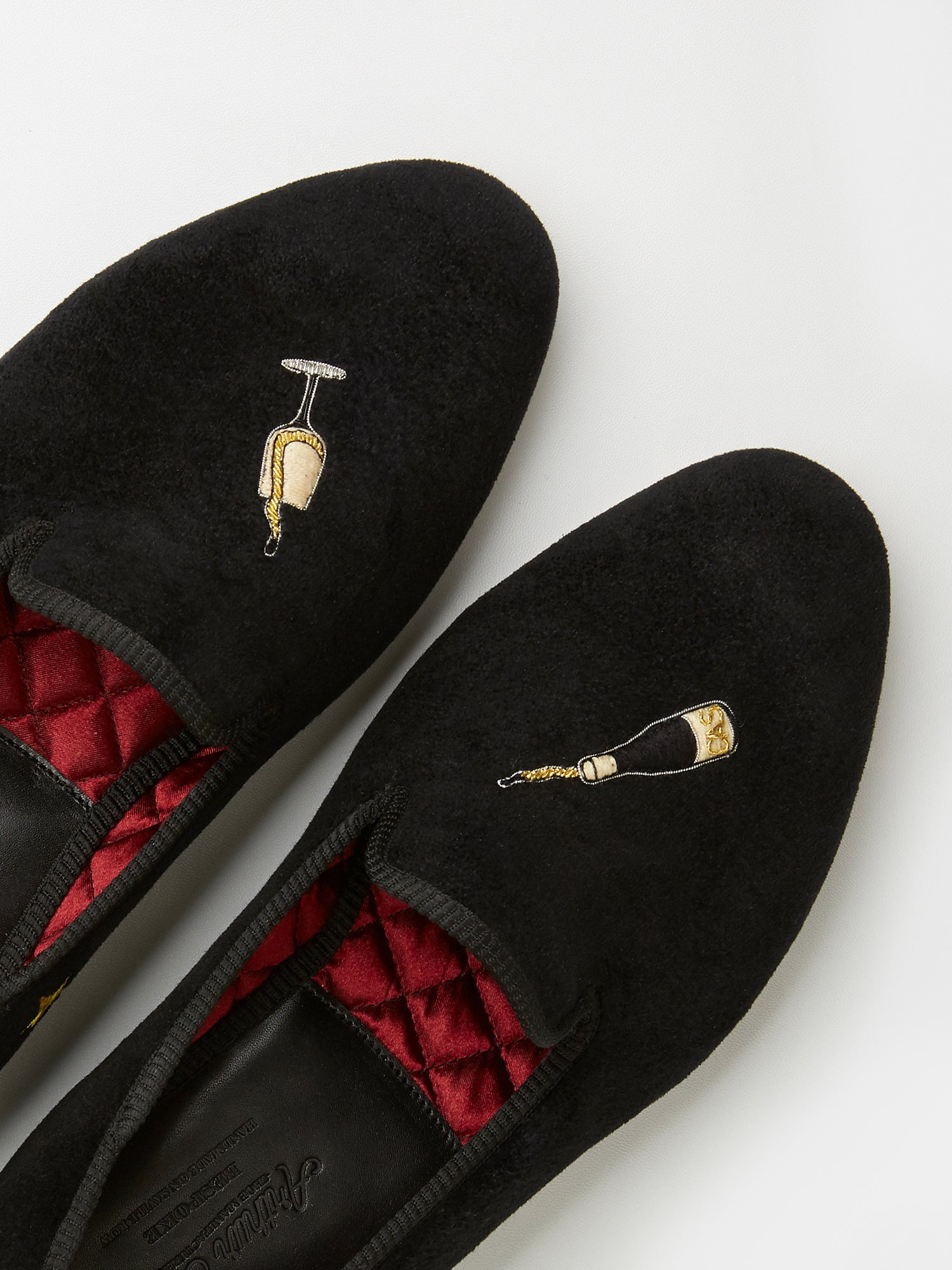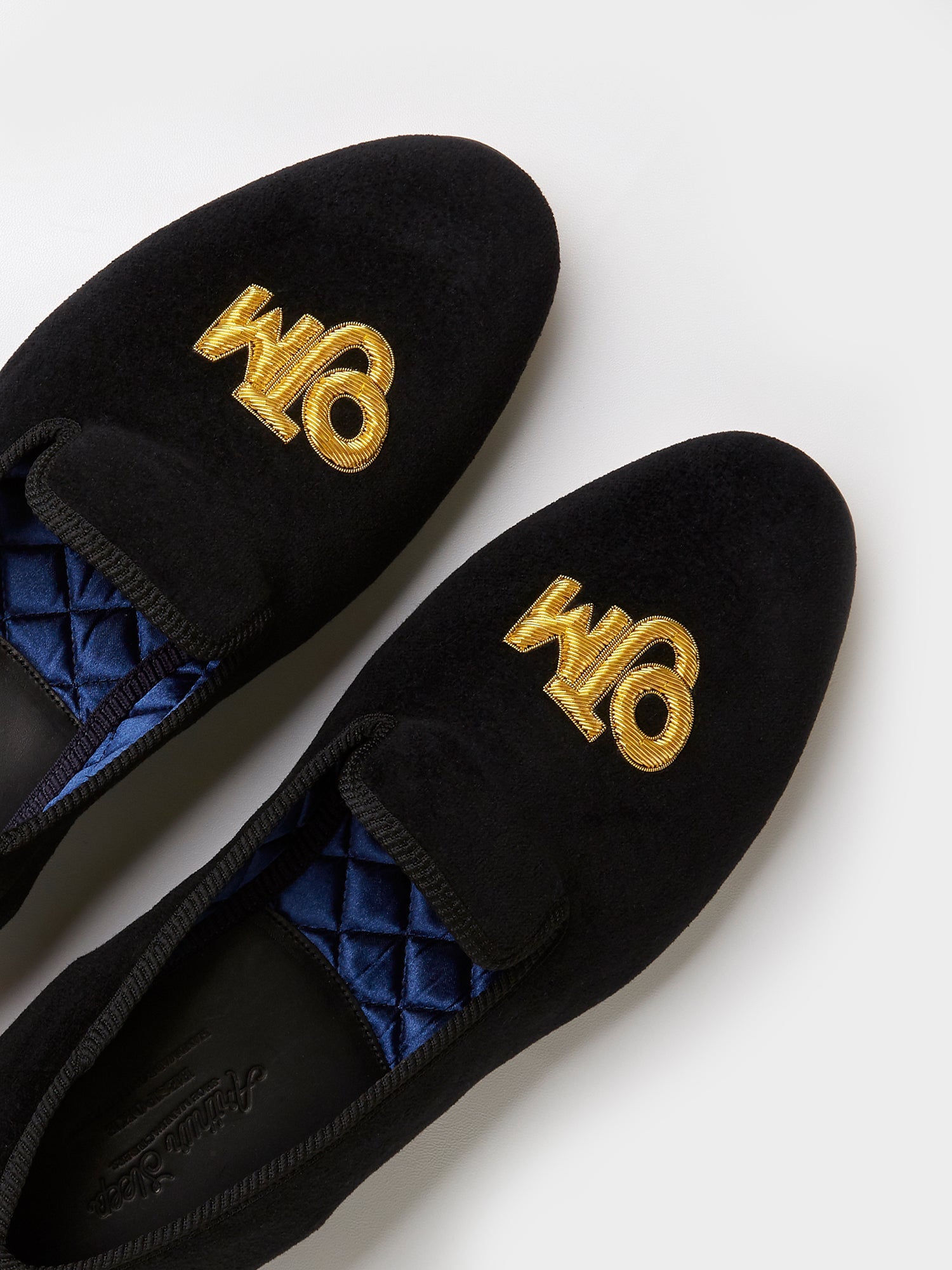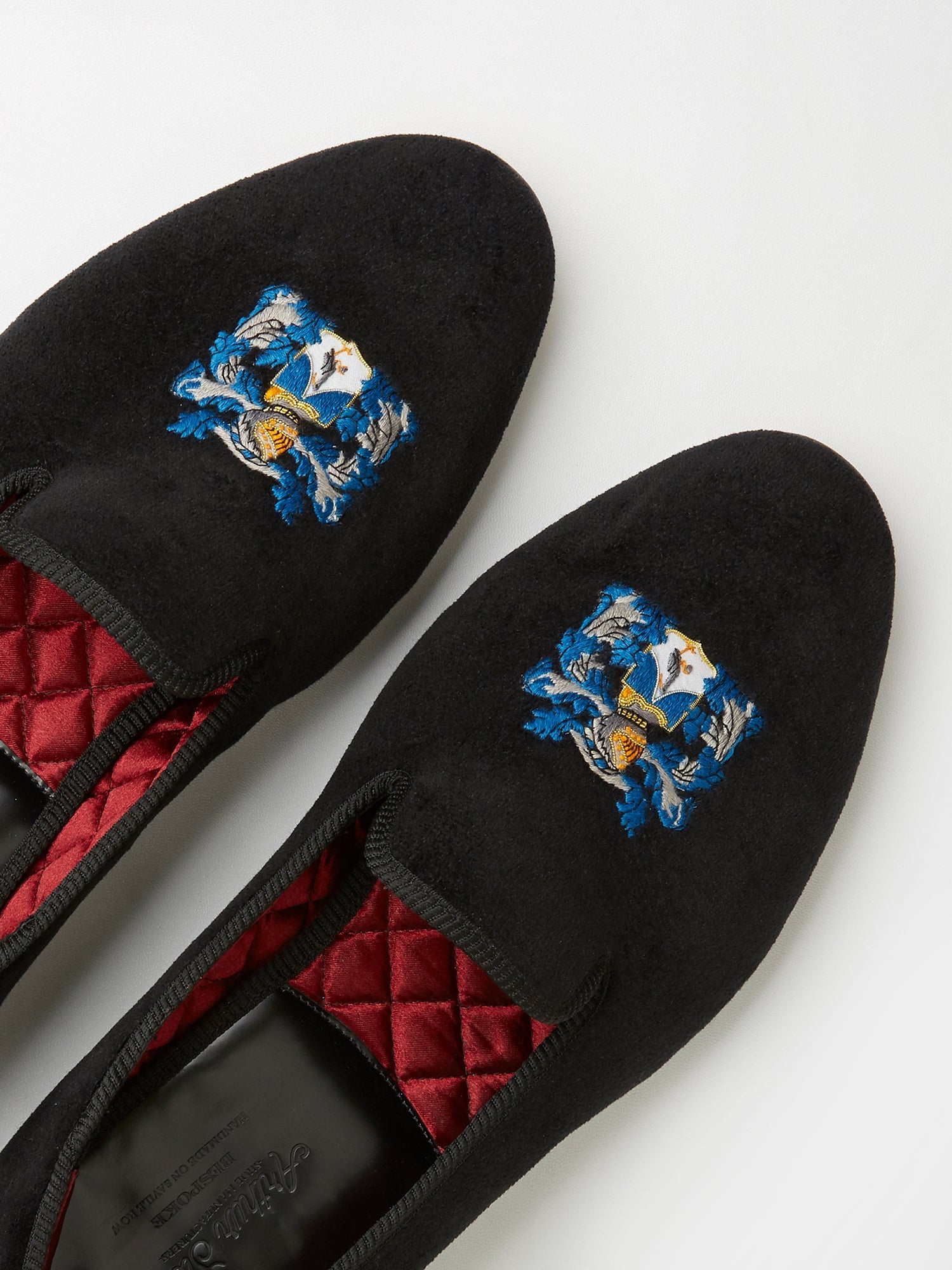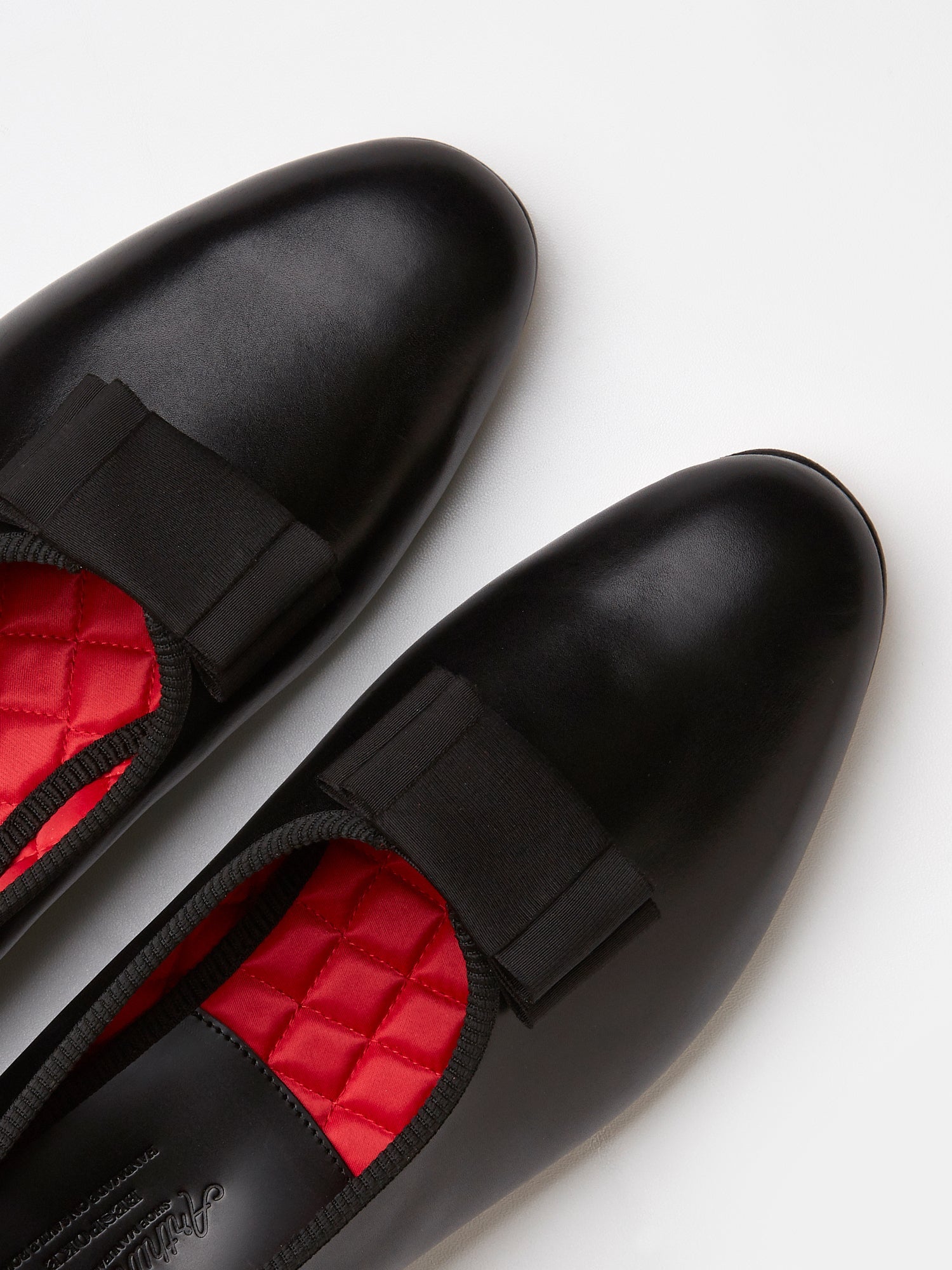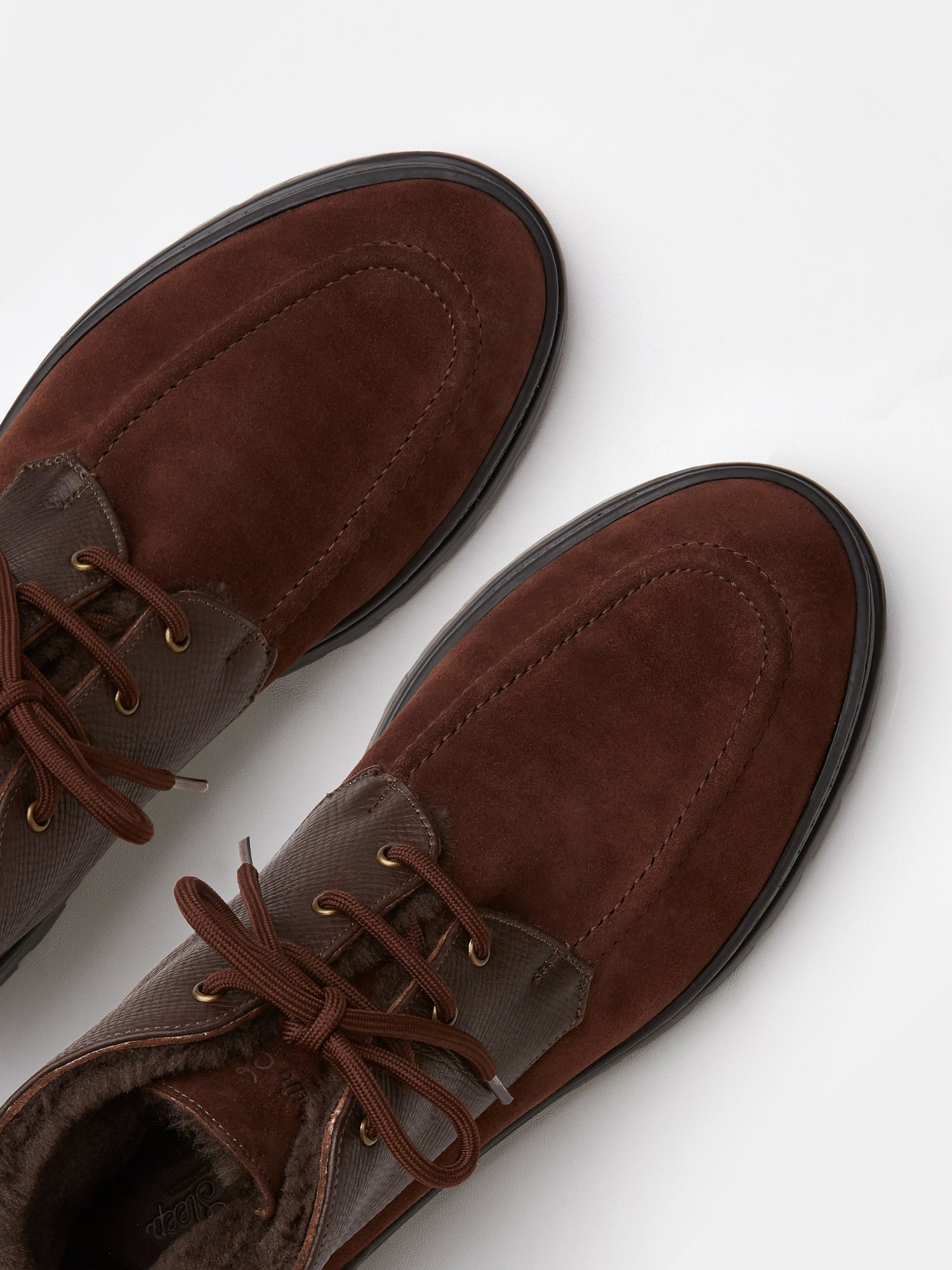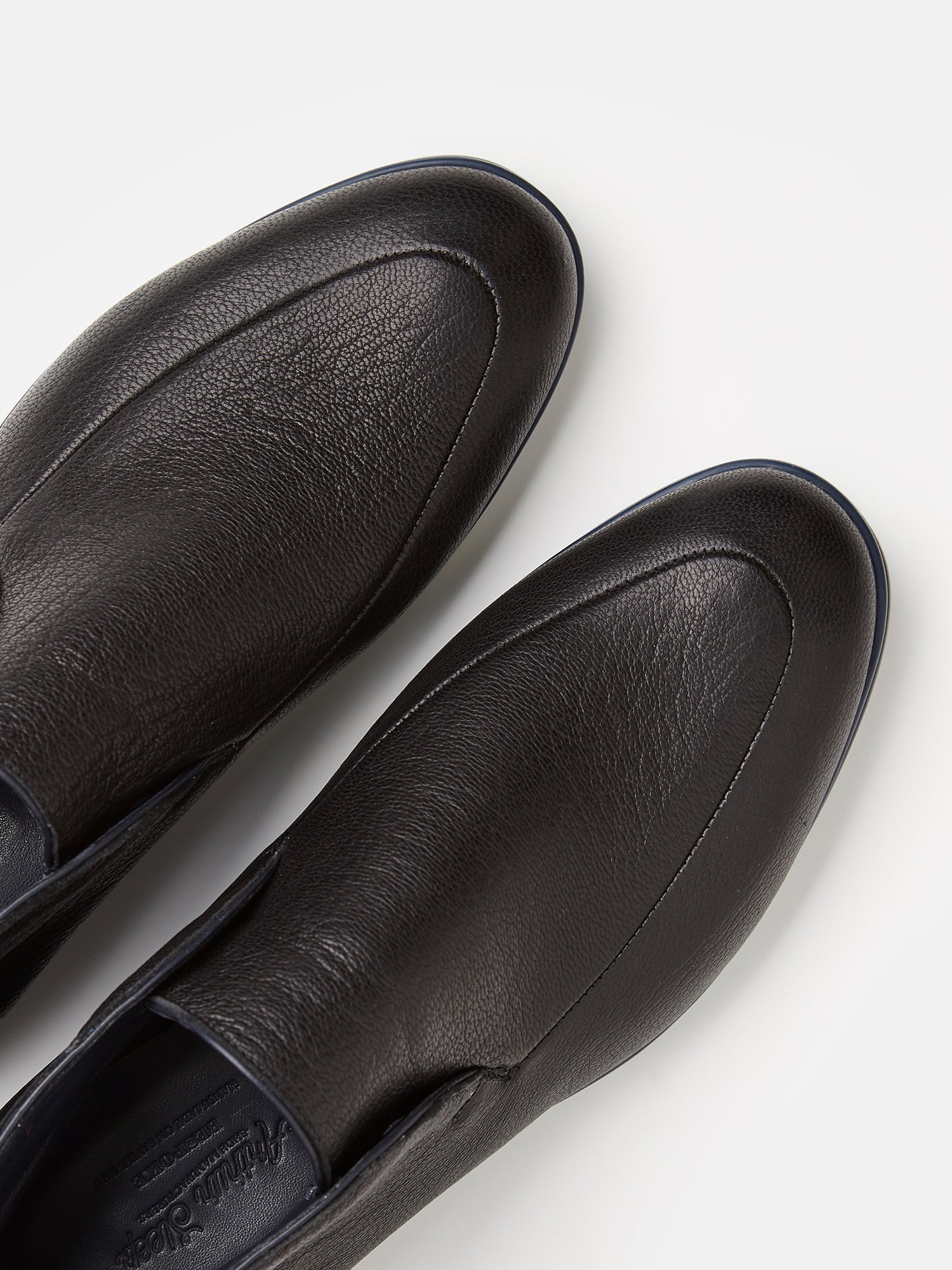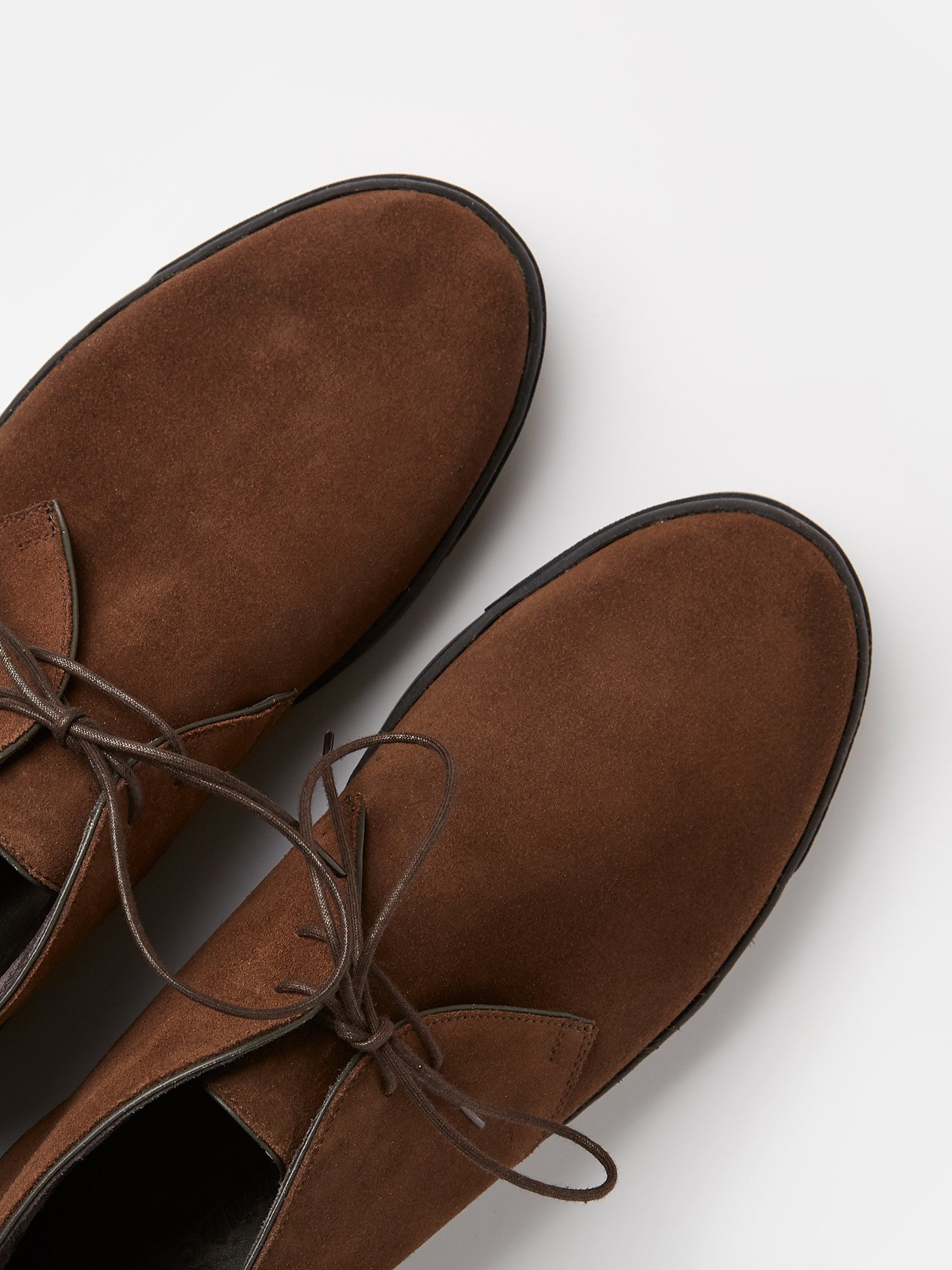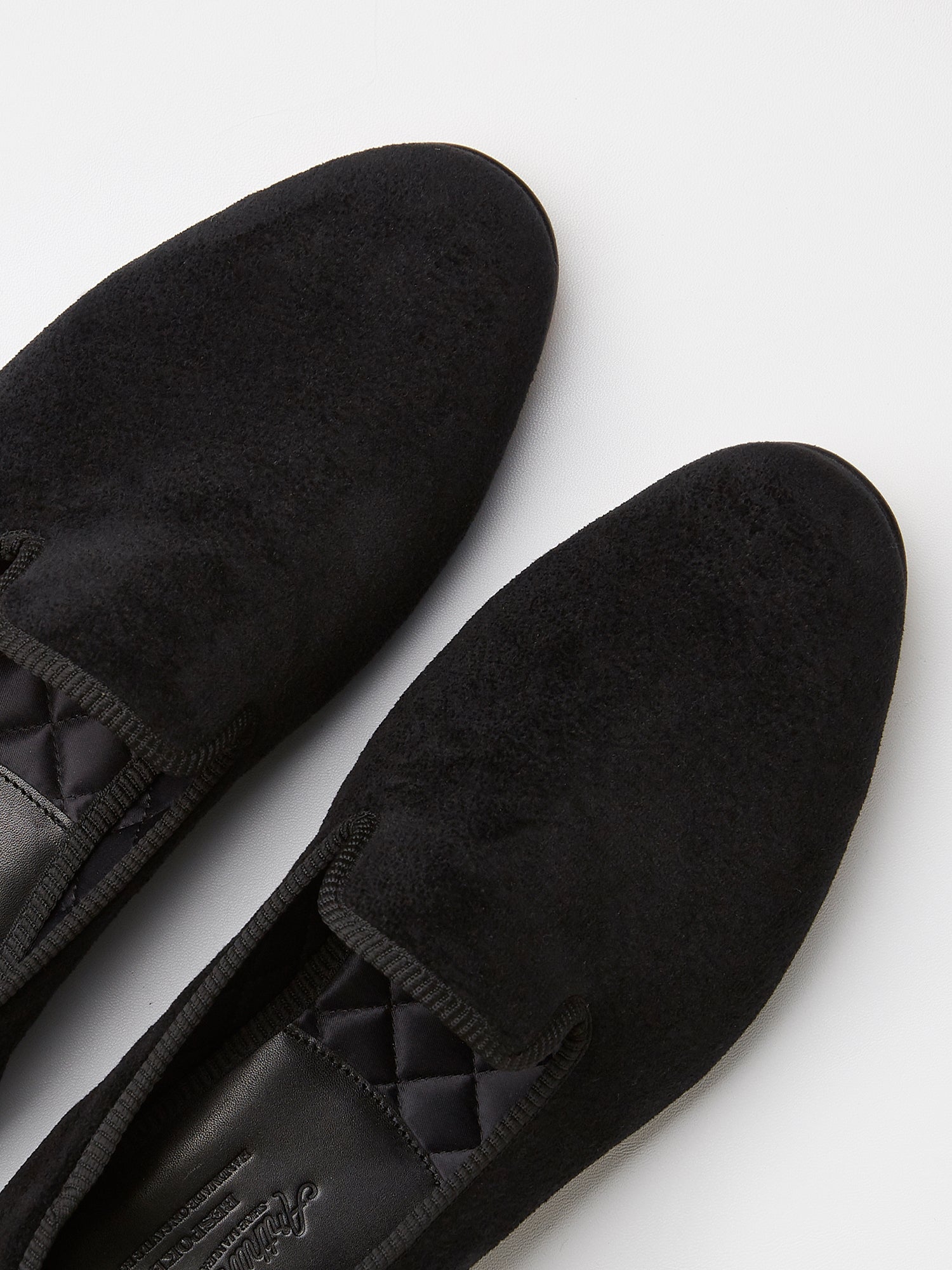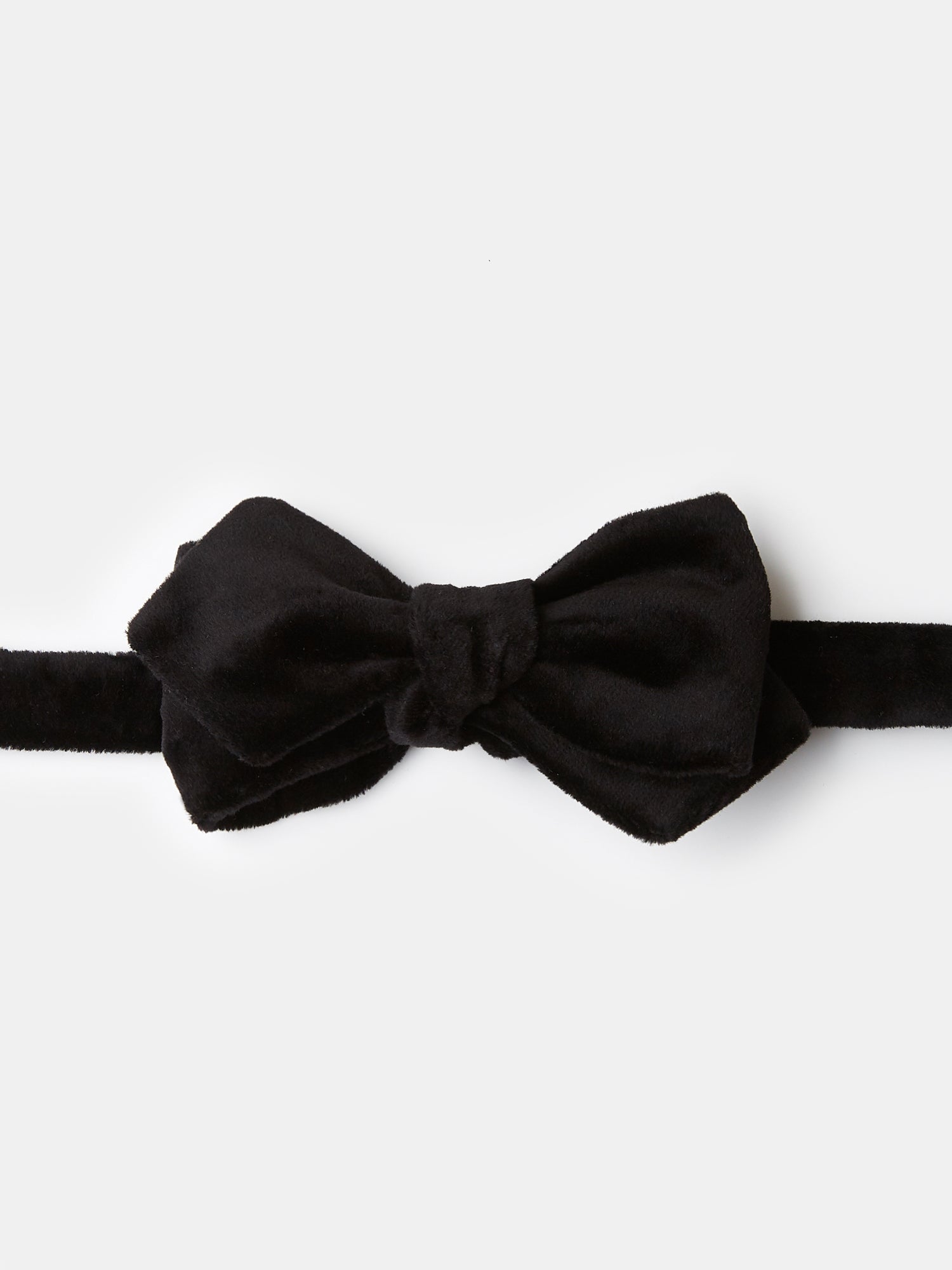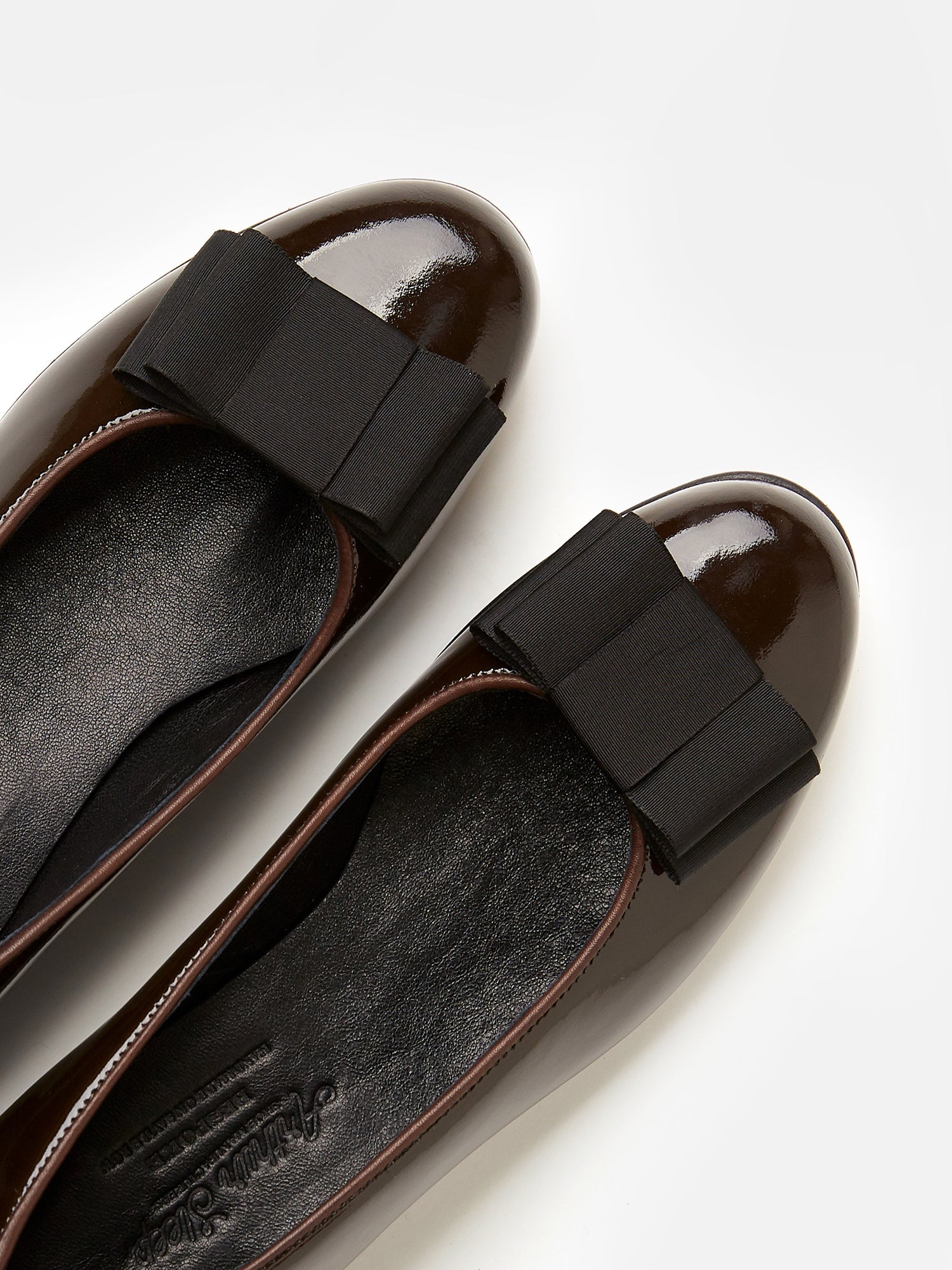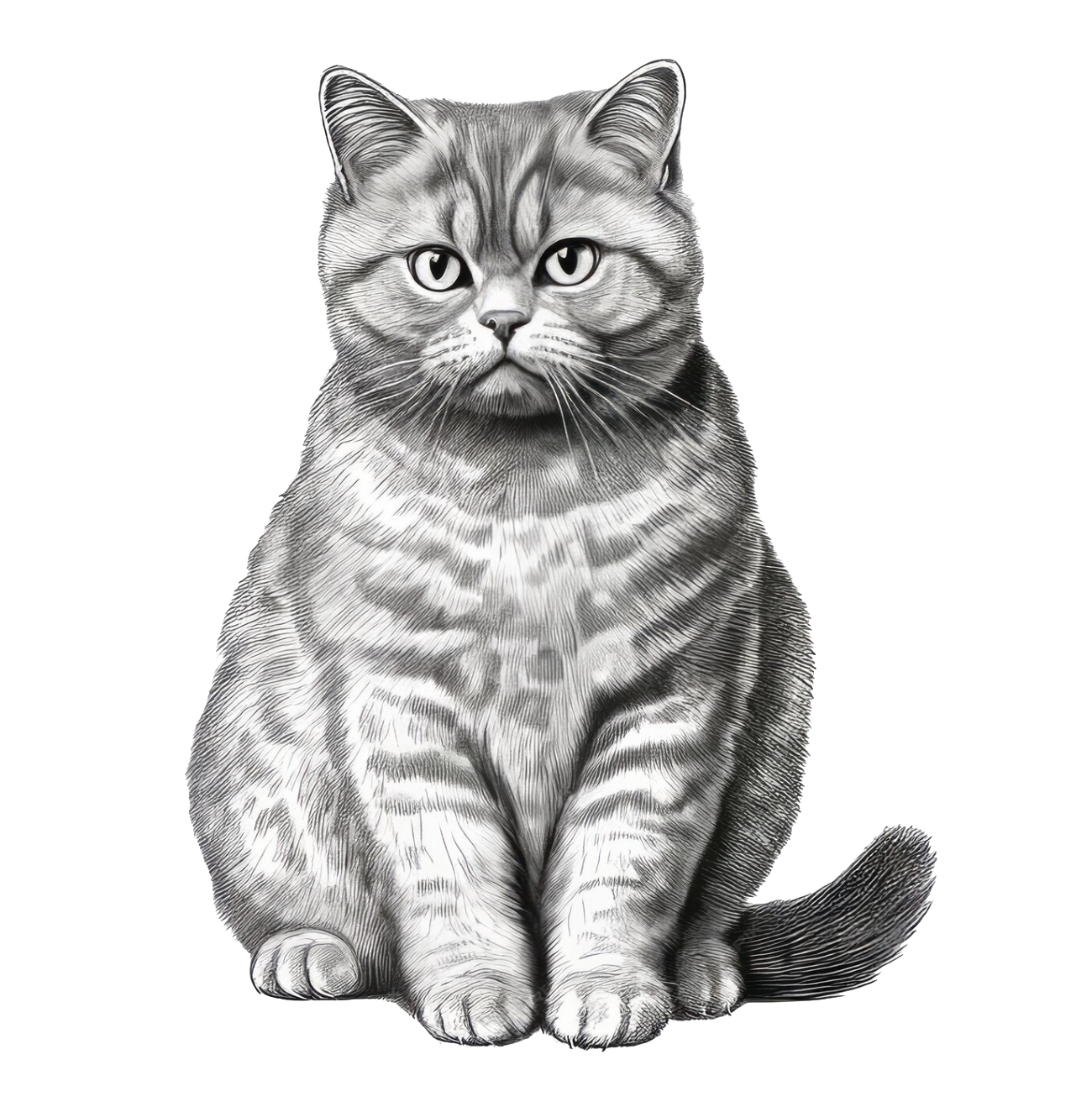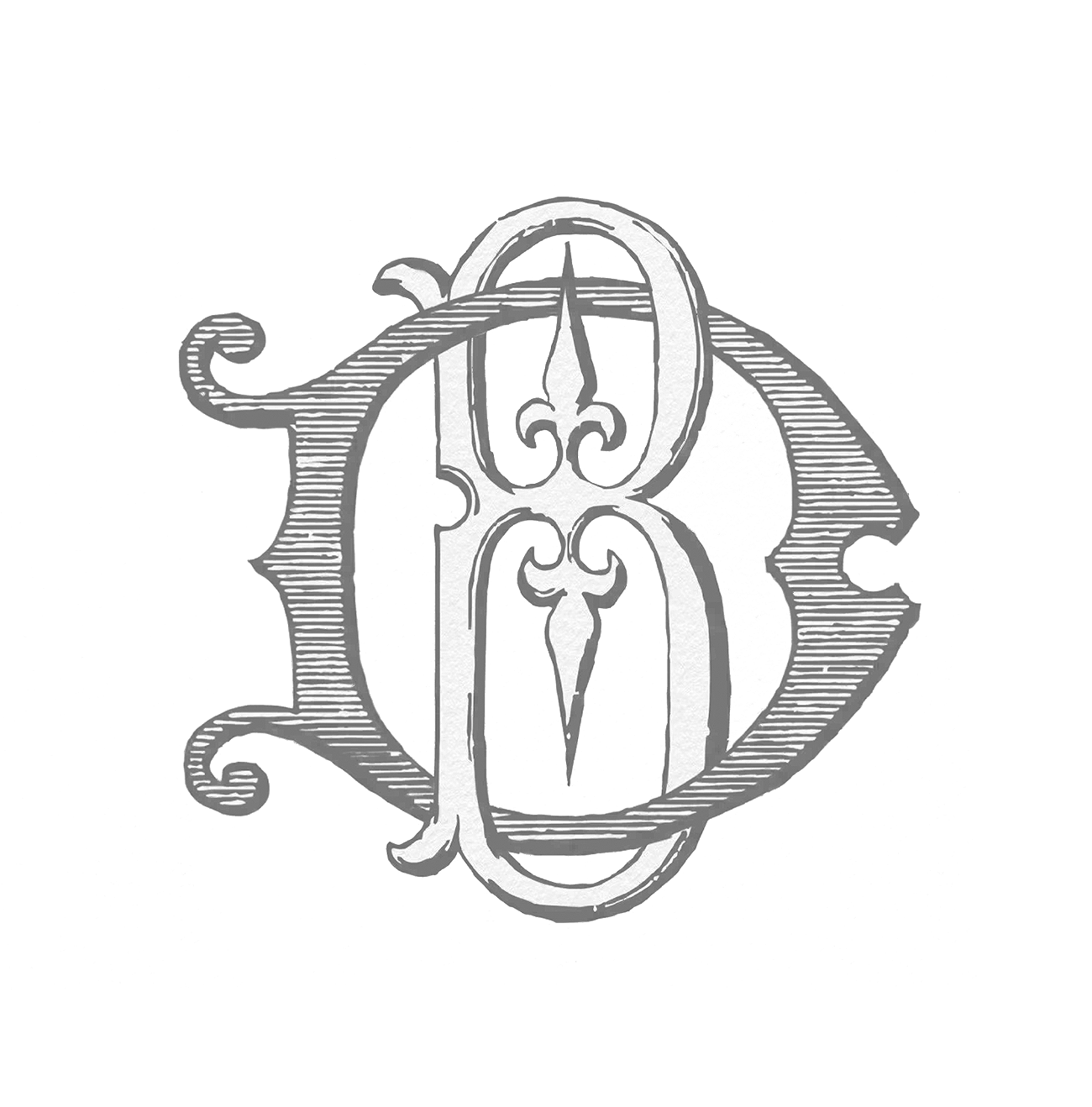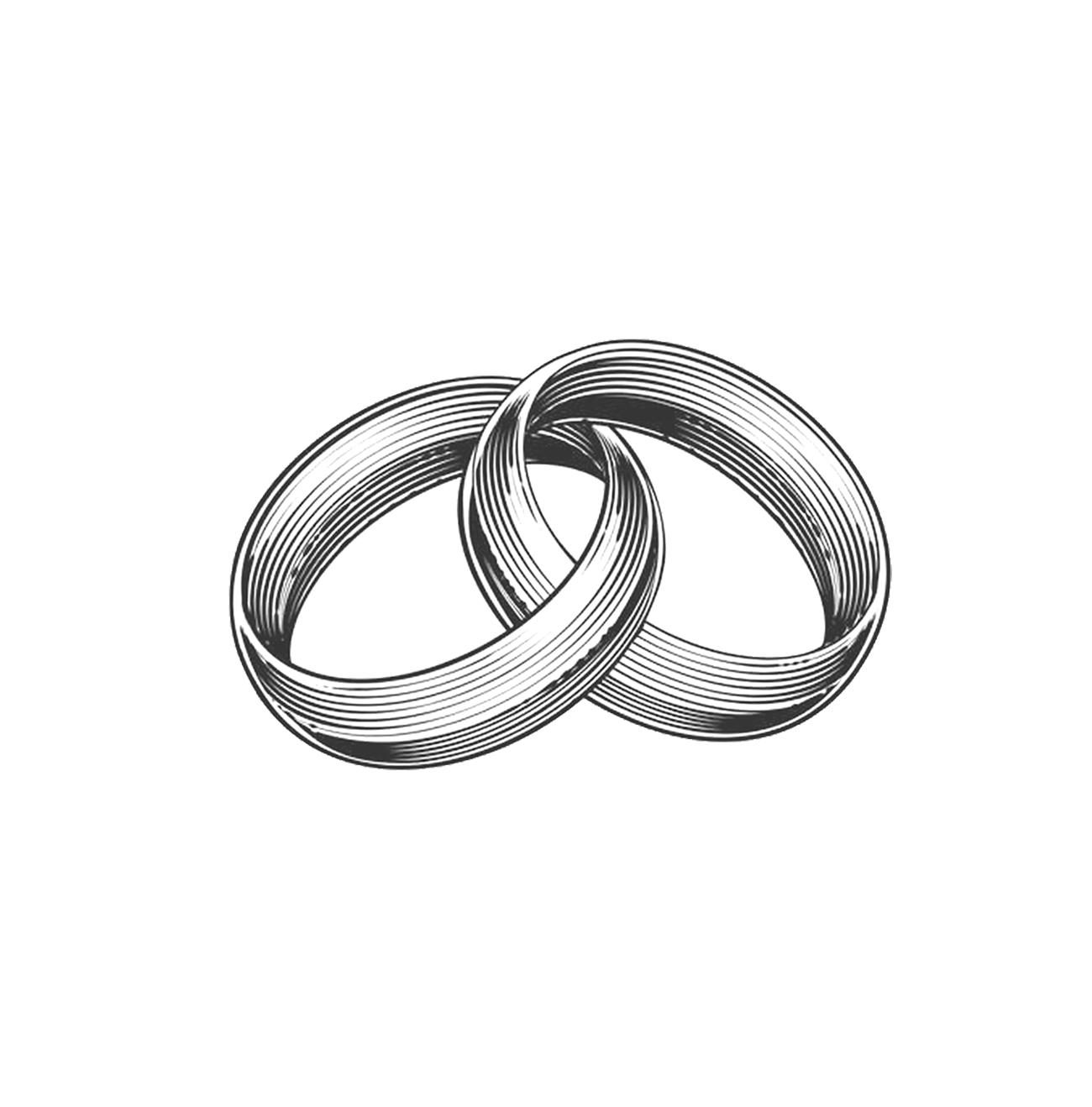Black tie is the simplest and most elegant uniform a man can wear. The secret is high contrast, rich materials, and a clean, flattering silhouette. The best eveningwear doesn’t seek attention. It deserves it.
Counterintuitively, black tie is the most democratic of dress codes: everybody wears the same thing. What distinguishes good and great isn’t unusual garments nor extra accessories. (In eveningwear, less is more.) The difference lies in the details and materials, how they cohere, how they create a sense of occasion.

The backbone of eveningwear is the dinner suit (or tuxedo, as our North American friends say). The classic choice is black on black, wool with grosgrain facing on the lapels and a stripe running down the trouser leg. We like a wool / mohair blend for an extra-crisp finish, crease resistance, and a little sheen in the candlelight or flash photography. Whether buying off-the-rack or talking to your tailor, go for simplicity and formality: a single button jacket and jetted pockets are ideal. Avoid the notch lapels of a regular business suit and go for peak lapels or a shawl collar. And think about the silhouette: this is the time for strong shoulders and a slightly nipped waist. Nothing too slim fit. This is a suit for enjoying yourself: you need to be able to move.
Conventionally, the waist is covered on a dinner suit by a silk cummerbund around your waist, or a waistcoat that covers the top of the trousers. A waistcoat is less convenient in warmer climes but adds a touch of gravitas and is a welcome extra for cooler weather events. It’s a special horseshoe shape to show the upper half of the shirt. Consider asking your tailor to make one up in the same cloth as your suit.
The classic bow is black silk and self-tie. Like any good neckwear, it should be made from heavy silk (matte or smooth but nothing too shiny) and generously proportioned. Learning to tie a self-tie bow is one of life’s little pleasures, just don’t leave it until the last minute.
A good dinner shirt is white cotton with marcella collar, cuffs, and chest panel. The thick, textured marcella pique makes the shirt extra crisp. In place of the chest buttons it should have space for metal studs which, in keeping with the theme of black/white contrast, should be onyx or mother of pearl. Some guys prefer a wing collar on the shirt, but we think the classic English spread collar is the more refined option.
When it comes to footwear, the ultimate choice is the opera pump. It’s a centuries-old classic, and now that it’s less common on the red carpet, the opera pump is the ultimate sign of sophisticated evening dressing. The whole ethos of black tie is to simplify: fewer buttons, fewer pockets, fewer visual breaks in the silhouette. That’s why a pump beats a lace-up, and why your dress socks should be black silk or fine cotton, to blend seamlessly with the trouser.
As with the suit, your shoes should be elegant and yet easy going, allowing you to relax without any stiffness or restriction. This makes our bespoke opera pumps and bespoke evening slippers all the more useful: perfect fit means a lot in the small hours, and when the drinks are flowing our cutting-edge DryWired Textile Shield® certainly comes in handy too.
Accessories should be simple precious metal studs and cufflinks in a single colour (we think a vintage set is a great choice). Traditionally no watch is worn with black tie (you are supposed to be off the clock, after all), but if you want one then small and gold is the way to go: think Cartier Tank on black leather.
Once you’ve mastered black tie, you can add variations to your rotation: a white dinner jacket in summer, a double-breasted suit in winter. For more informal or creative occasions, consider velvet dinner jackets (black or midnight navy are superb, very dark green or red can also work well) and velvet opera pumps or loafers.
When hosting an evening event at home, consider relaxing things a step further. Trade crisp fabrics for luxuriously soft ones: try a crushed velvet smoking jacket in place of the formal, structured suit jacket, a silk shirt in place of stiff marcella, and bespoke monogram slippers in place of formal opera pumps.
